Market Data

December 6, 2018
SMU Recession Monitor: Yield Curve Bears Watching
Written by Peter Wright
Indicators of economic activity in the U.S. do not predict an imminent recession, but the yield curve and housing permits should be on our radar screen.
Steel Market Update has been producing this report every three months. We are now increasing the frequency to two months as the pundits are discussing the timing of the next recession. Also, we have expanded our analysis to include the Chicago Fed’s National Activity Index and employment in truck driving. Economists consider recessions to be a necessary evil to clear out distortions that have arisen in the economy. Viewed individually, the leading indicators that we track offer limited insight into future economic expansion or contraction. Viewed collectively, they give subscribers a better idea of present and future business activity. Since World War II, most recessions have been preceded by an overheated economy as indicated by low unemployment, tighter monetary policy and rising long-term interest rates.
![]()
Figure 1 is a heat map of the eight indicators tracked in this expanded report. Only the yield curve, which has been a strong predictive indicator in the past, is showing signs of distress.
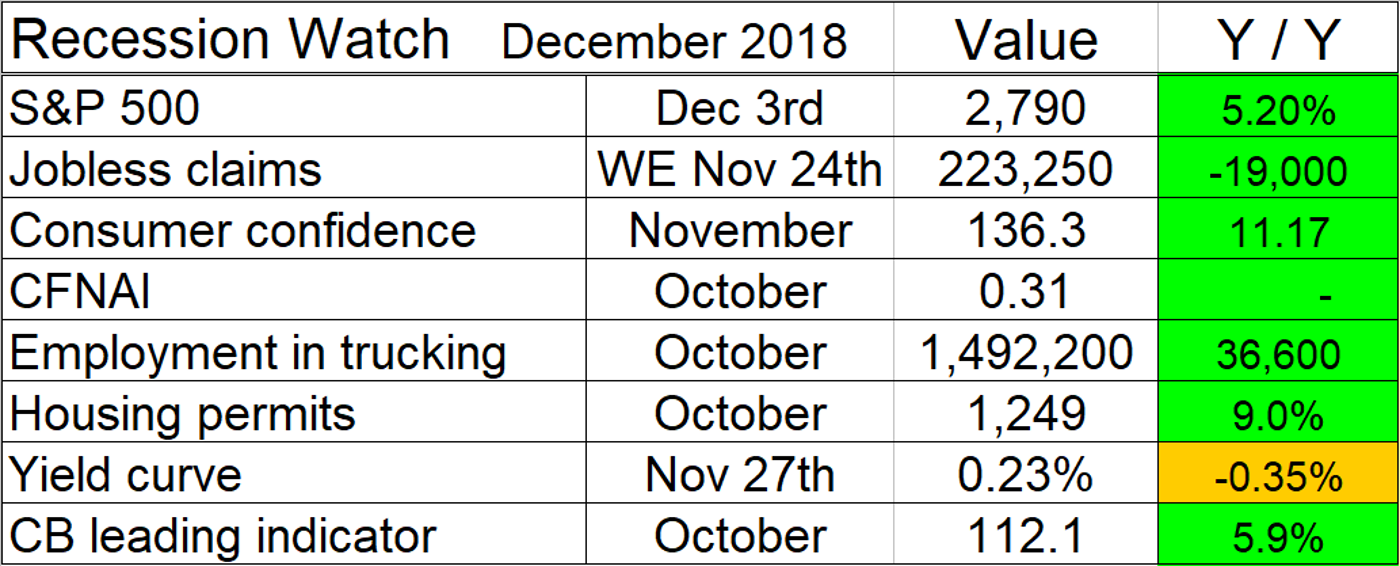
Figure 2 provides a history of U.S. recessions since 1970. Recessions occurred in 1974, 1980, 1981, 1990, 2001 and 2008. In its second estimate of U.S economic growth for Q3 2018, the BEA reported GDP growth of 3.5 percent. This is a quarter-on-quarter result. On a trailing 12-month basis, GDP grew 3.04 percent in Q3. This was the first quarter to exceed 3.0 percent since Q2 2015. Congressional Budget Office economists expect economic growth to decline in upcoming quarters.
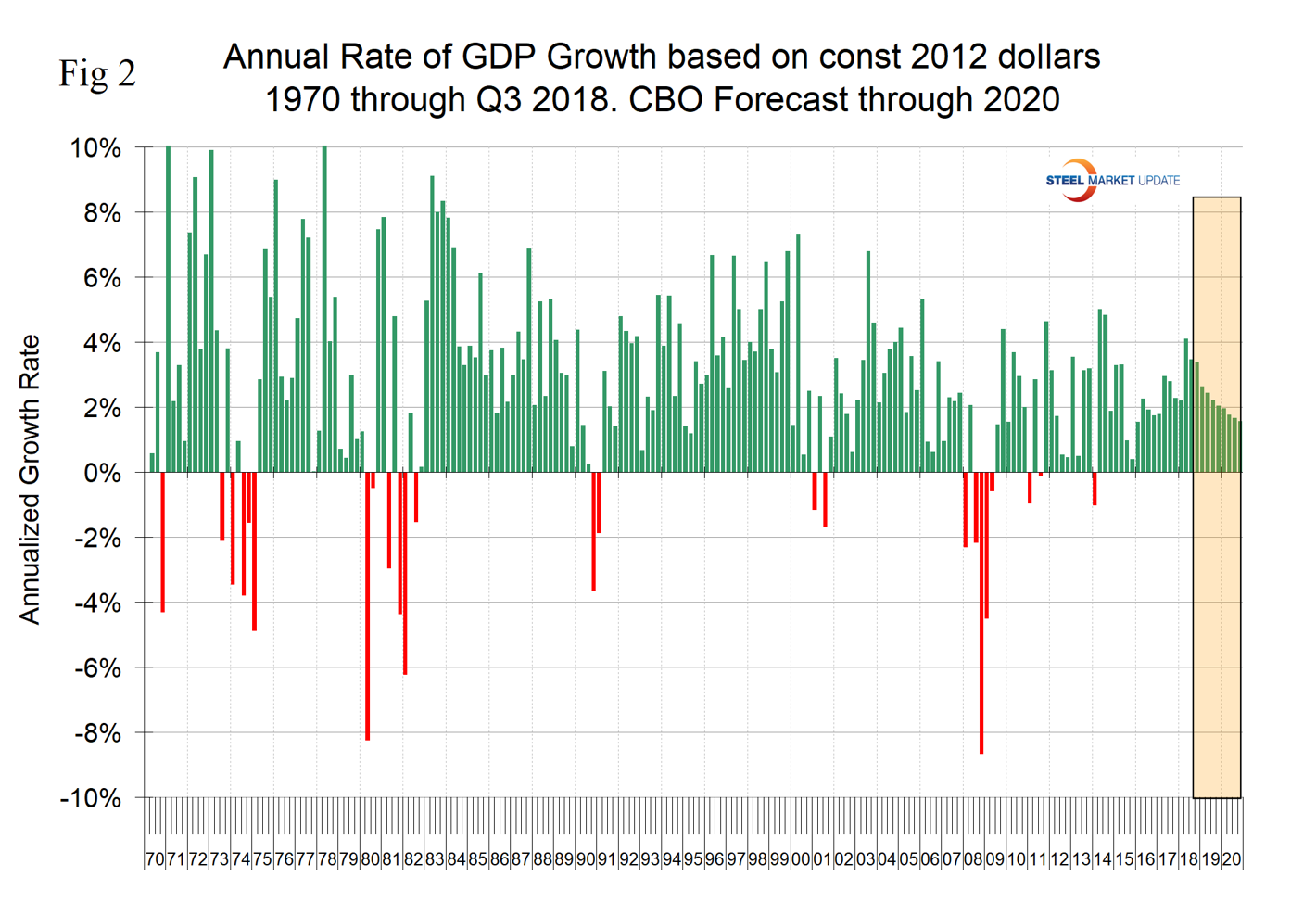
Figure 3 shows the three-month moving average of the S&P 500 on the first day of each month from January 1990 through December 2018. The stock market did predict the recession of 2001, but failed in 2008. Since then, there have been several blips that proved of no significance. The tendency is that stock prices decline as investors anticipate a weakening economy and flagging corporate earnings. Fed tightening is also a factor in 2018.
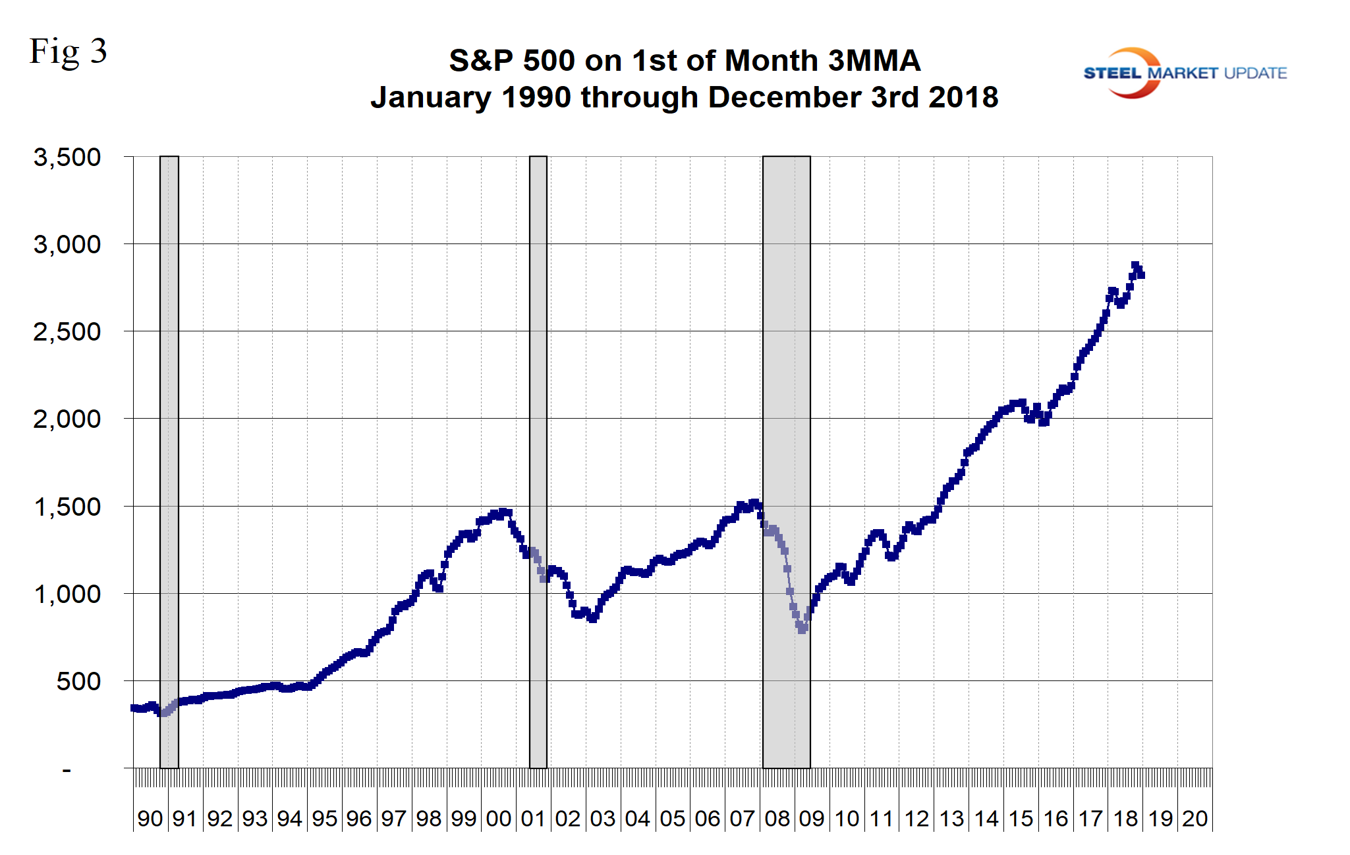
Figure 4 records new weekly claims for unemployment compensation. This indicator failed to predict the 1981 and 2008 recessions. It had a lead of over a year on the other four. Initial claims for unemployment insurance, reported weekly, are a sensitive measure of layoffs. Initial claims are currently at a 50-year low.
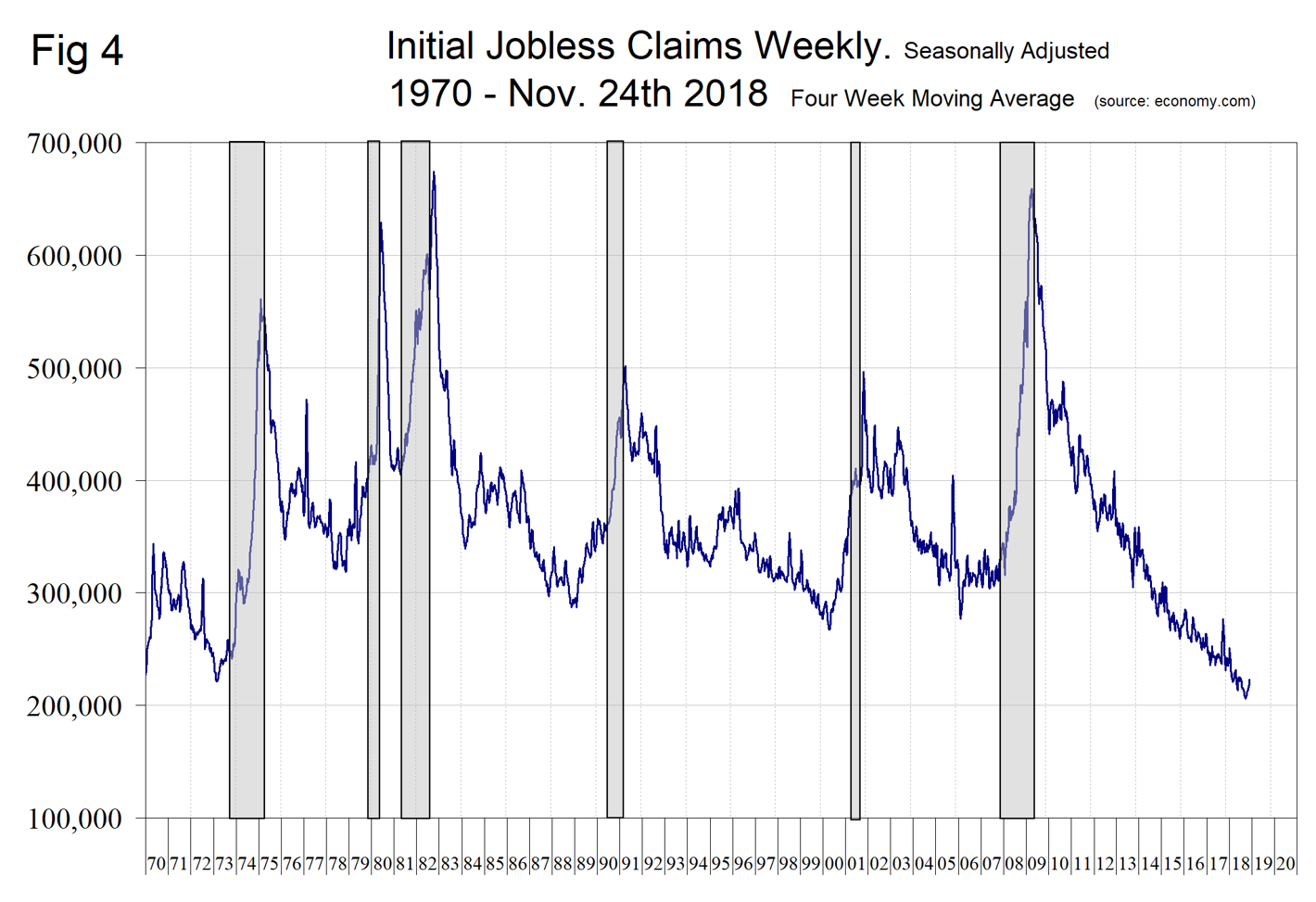
Consumer Confidence: When consumers, businesses and investors lose confidence, it sets up a downward self-reinforcing spiral of reduced spending and investment, causing even higher unemployment and further depressing confidence. The consumer’s sentiment about the present situation and future expectations are both strong and above their long-term trend lines (Figure 5).
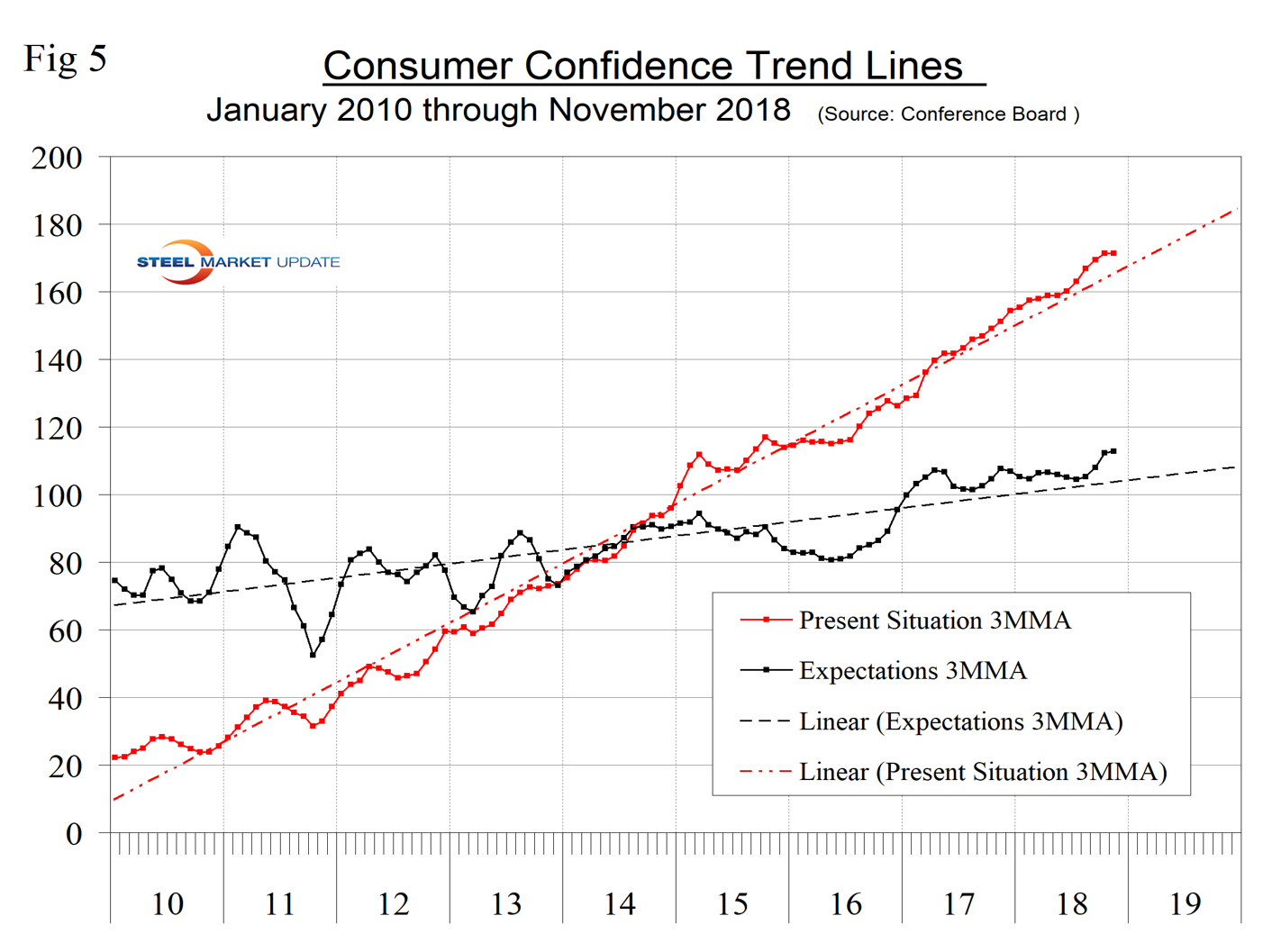
The Chicago Fed’s National Activity Index: This index is a weighted average of 85 indicators of national economic activity drawn from four broad categories of data: 1) production and income; 2) employment, unemployment and hours; 3) personal consumption and housing; and 4) sales, orders and inventories. A zero value for the index indicates that the national economy is expanding at its historical trend rate of growth. Negative values indicate below-average growth and positive values indicate above-average growth. When the CFNAI-MA3 (three-month moving average) value moves below –0.70 following a period of economic expansion, there is an increasing likelihood that a recession has begun. Conversely, when the CFNAI-MA3 value moves above –0.70 following a period of economic contraction, there is an increasing likelihood that a recession has ended.
Since our data stream began in January 1970, the CFNAI has predicted every recession. But in between, there have been stumbles and false alarms (Figure 6). Figure 1 does not show a year-over-year comparison for the CFNAI because it is not a progressive indicator.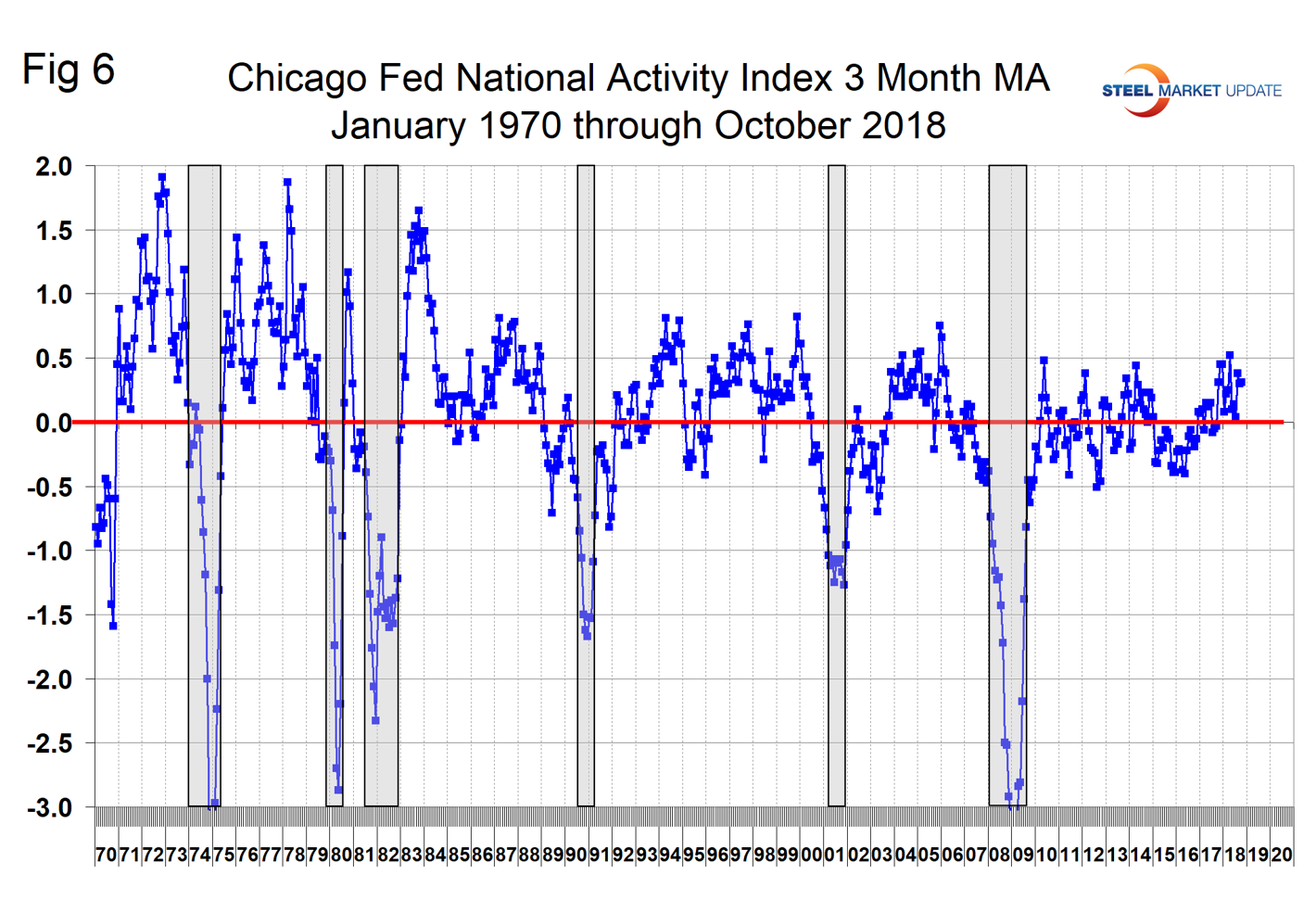
Employment in Trucking: Figure 7 shows total truck driver employment as reported monthly by the BEA. As a measure of economic activity, this indicator has predicted the last three recessions with no false alarms.
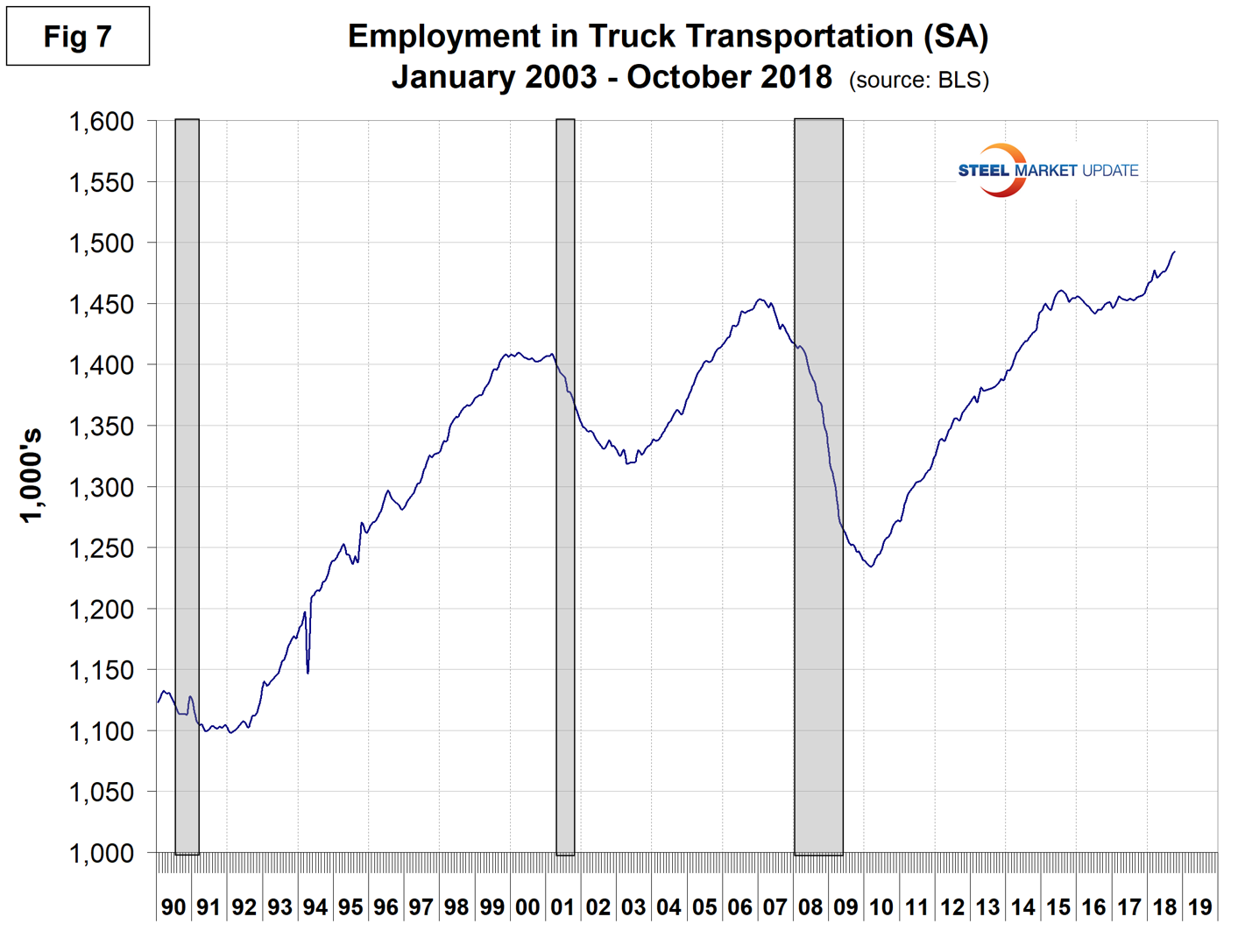
A decline in housing starts has led every recession since 1970. This seems to be a very prescient indicator. At present, there is evidence of slowing, but no sustained decline. This month, we have changed our analysis from housing starts to housing permits to try to be ahead of the game. On a year-over-year basis, growth still looks good, but in the shorter term the predicted slowdown is beginning to appear (Figure 8).
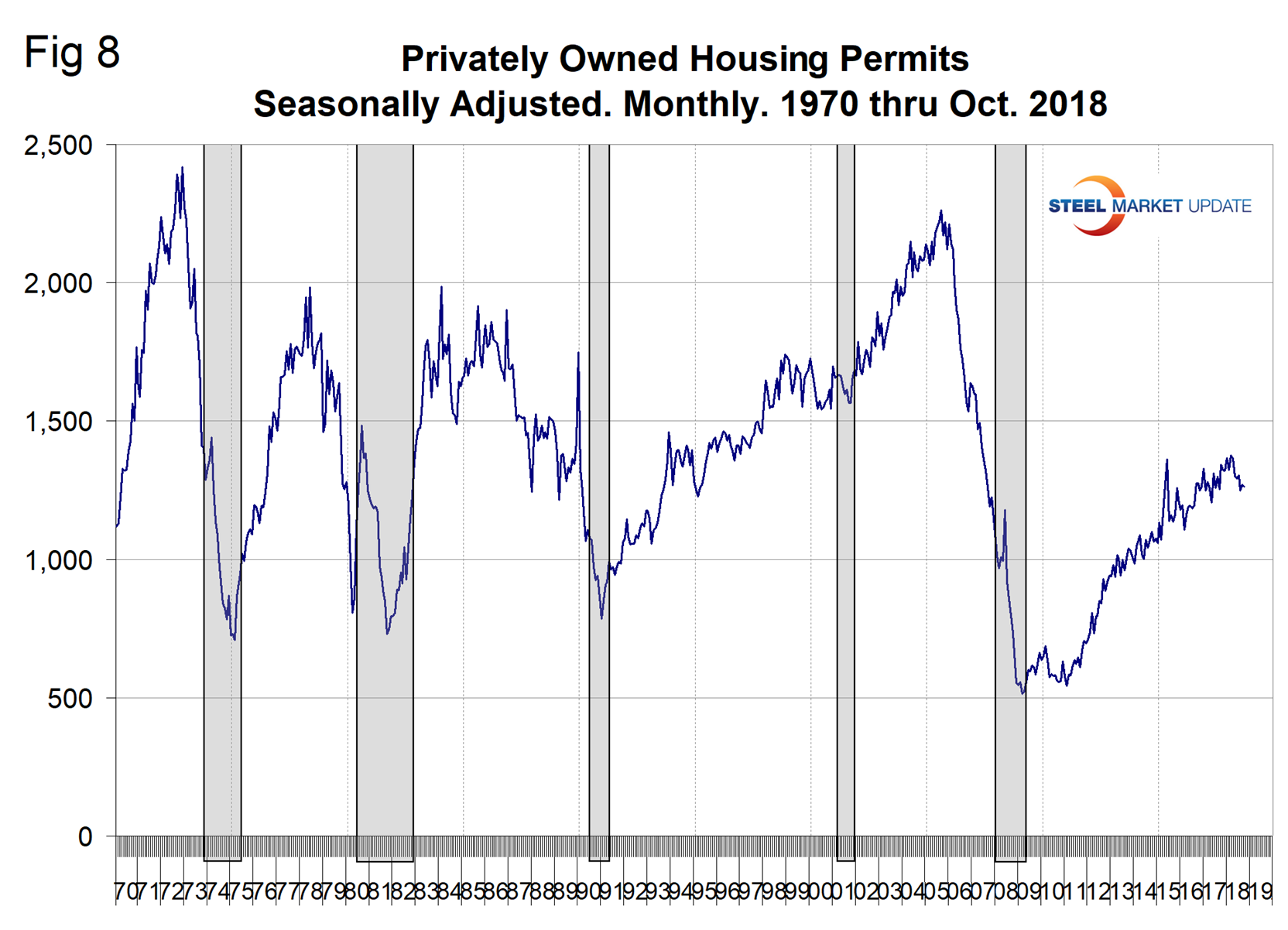
Historically, the most accurate recession predictor has been the bond market, because this massive capital market determines government and business borrowing rates. This is why the famous yield curve has been able to predict every recession since the mid-’60s with a 6- to 24-month lead time (and just one false positive). Or put another way, if the 2/10 yield curve inverts, there’s a 90 percent historical probability that a recession is coming in the next two years.
Guggenheim Investments reported on Oct. 29: “Despite robust gross domestic product growth this year, our Recession Probability Model and Recession Dashboard still suggest a recession is likely to begin in early 2020. While there is little risk of downturn in the near term, more restrictive monetary policy will overtake an overheating economy. We examine why, despite prevailing sentiment to the contrary, the flattening yield curve remains a powerful indicator of coming recession.” The full report can be accessed here: Recession monitor 2019-01.doc
The treasury spread is developed by subtracting a shorter-term from a longer-term treasury yield. Ten-year interest rates minus two-year interest rates, for example, as shown in Figure 9. A spread that is increasing is a sign of higher growth and inflation as bank lending becomes more profitable (borrow short and lend long) and loan growth is expected to accelerate. A declining or contracting yield spread foreshadows lower growth and inflation from contractions in bank loan growth due to reduced profitability. The current forecast predicts lower growth and inflation will materialize in the first months of next year. That thesis has been unfolding as the yield curve is contracting. A negative spread anticipated all five of the recessions since 1975. If, as expected, the Fed continues to raise rates through next year, the yield curve is likely to become almost completely flat, meaning that the yield spread will be close to zero. When the spread becomes negative, the money supply is reduced because banks’ loans are earning less than their liabilities, which are deposits.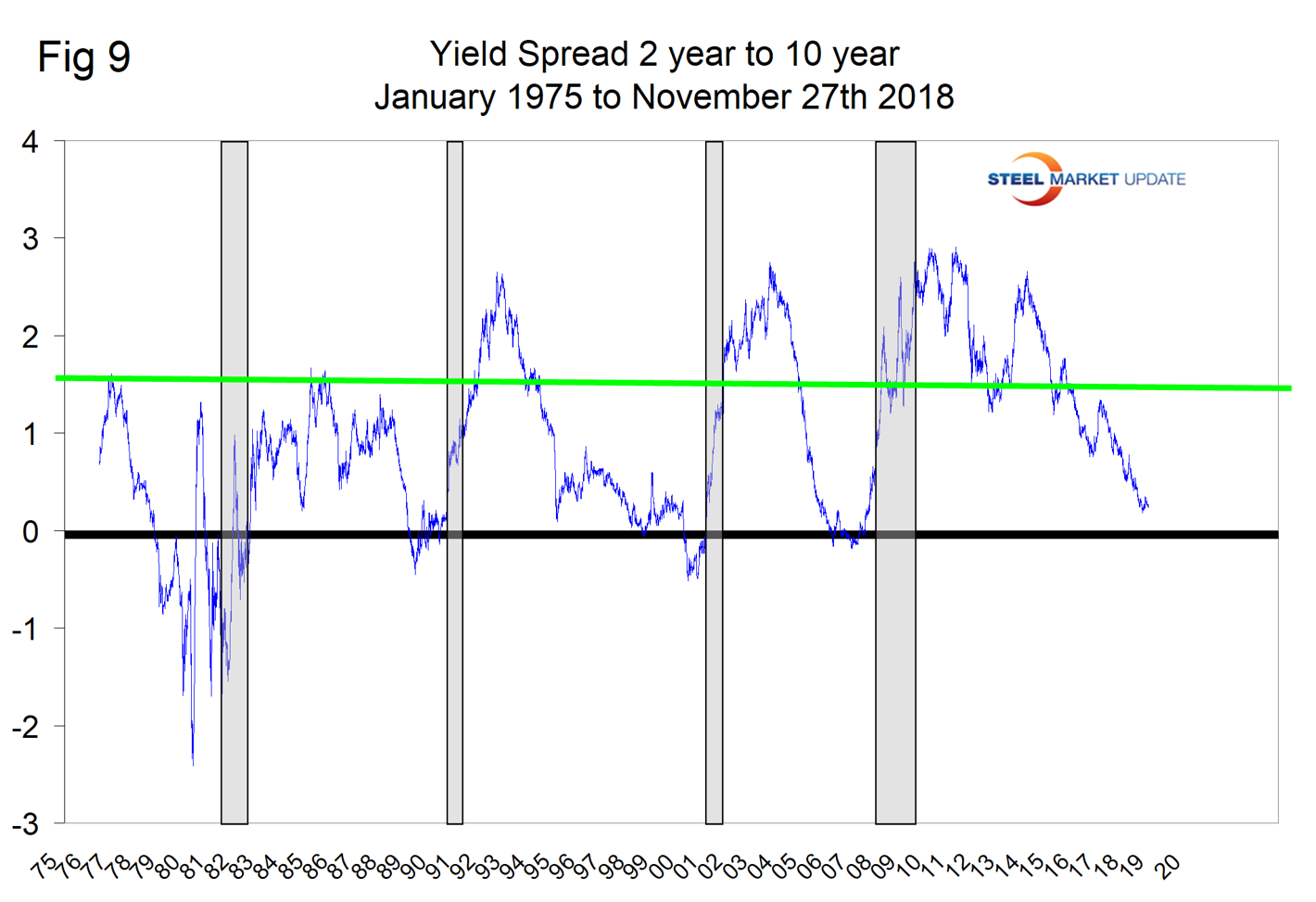
Figure 10 is the chart we like the best, though we have no history before 2008. This is The Conference Board leading and lagging economic index. We have subtracted one from the other in the rationale that if the lead is better than the lag, the situation is improving, or vice versa. The lead minus lag inverted three years in advance of the 2008 recession; certainly by 18 months before the big event it was clear something was happening. Through October, the spread was very healthy and has been widening for almost two years.
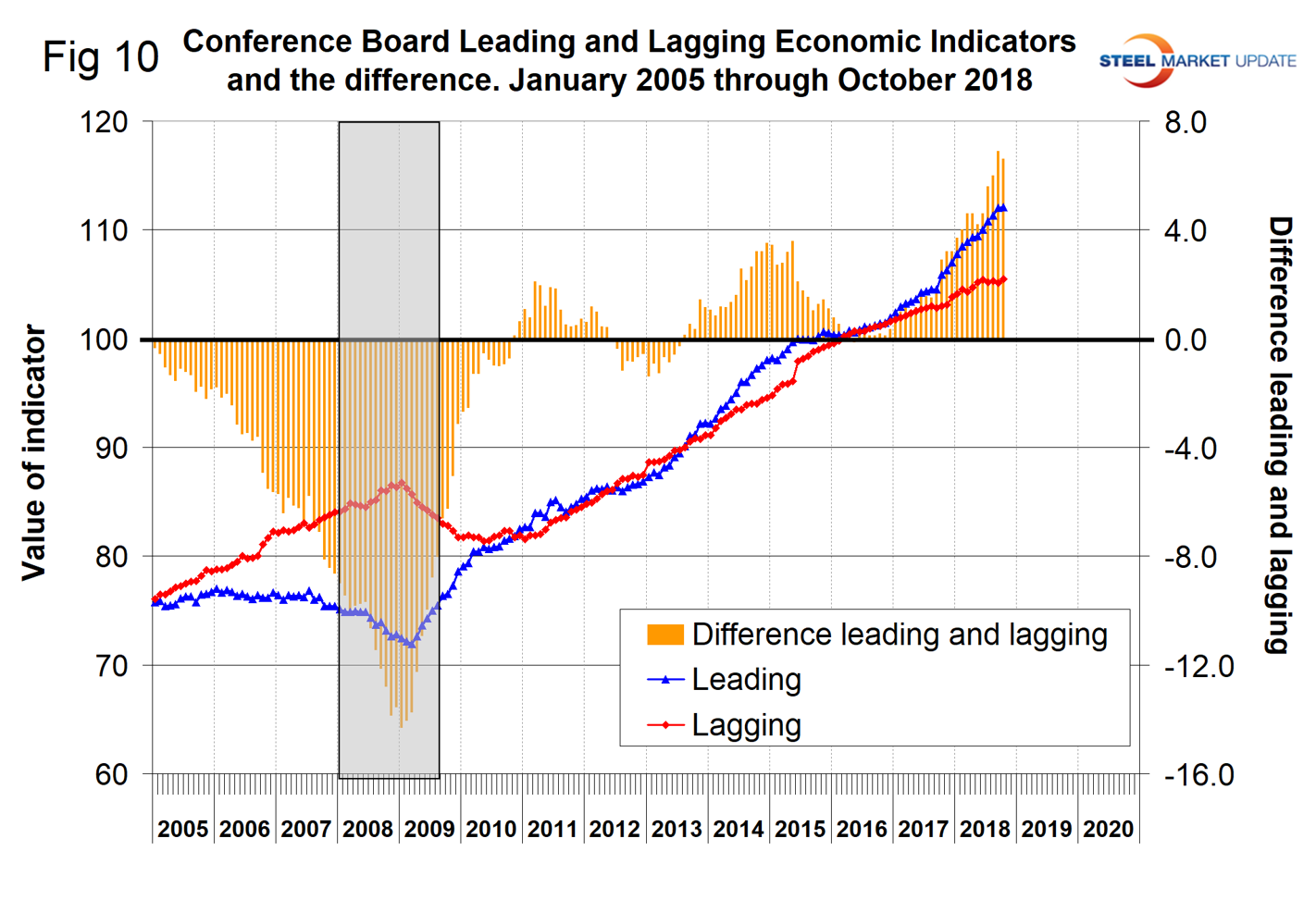 SMU Comment: It is evident from this data that examining all eight indicators is better than any one of them, and we conclude there will not be a recession for at least the next six months. The U.S. economy is generally healthy, but the yield spread and housing market bear watching.
SMU Comment: It is evident from this data that examining all eight indicators is better than any one of them, and we conclude there will not be a recession for at least the next six months. The U.S. economy is generally healthy, but the yield spread and housing market bear watching.






